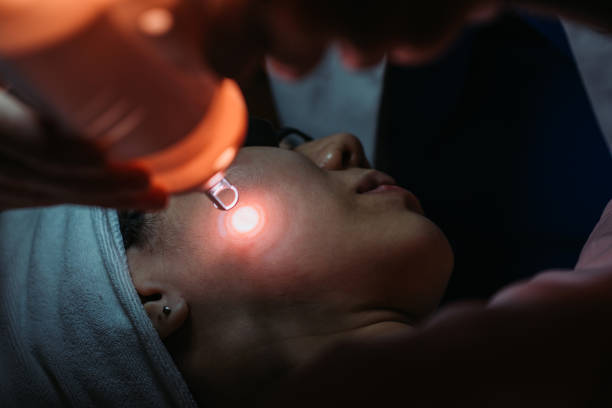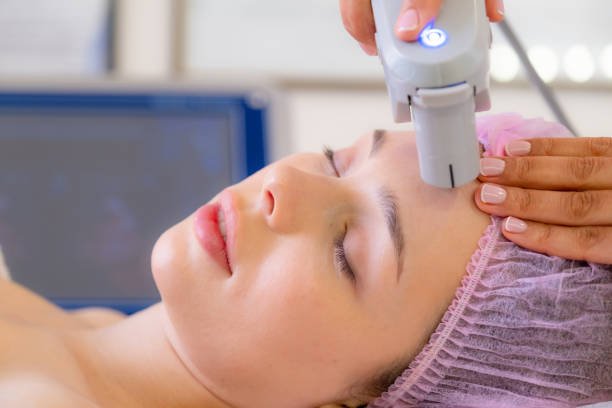Laser therapy has revolutionized the field of medical treatment by harnessing the power of focused light. This innovative approach utilizes lasers, which stands for light amplification by stimulated emission of radiation, to deliver precise and targeted treatment to various medical conditions. With its ability to minimize damage to surrounding tissues, laser therapy offers a range of benefits, including reduced pain, swelling, and scarring compared to traditional surgical procedures. In this blog, we will explore the concept of laser therapy, its diverse applications, potential risks, and the recovery process.
Also Read: Affordable Laser Treatment in Kolkata at Image Clinic
Understanding Laser Therapy
Laser therapy involves the use of lasers that emit specific wavelengths of light. Unlike conventional light sources, lasers generate powerful and focused beams that can be used for various medical purposes. In the medical field, lasers enable surgeons to work with exceptional precision, minimizing damage to adjacent tissues. As a result, patients often experience reduced pain, swelling, and scarring, making laser therapy an attractive alternative to traditional surgery. However, it’s important to note that laser treatment in Kolkata can be costly and may require multiple treatment sessions.

Applications of Laser Therapy
The versatility of laser therapy extends to a wide range of medical conditions. Here are some of the common uses:
- Tumor Treatment: Laser therapy can be employed to shrink or destroy tumors, polyps, or precancerous growths. It is also used to relieve symptoms associated with cancer and may be used alongside other treatments like surgery, chemotherapy, or radiation.
- Kidney Stone Removal: Laser therapy is utilized to remove kidney stones, offering a minimally invasive alternative to traditional surgical procedures.
- Eye and Vision Treatment: Laser therapy plays a crucial role in ophthalmology. It can be used to repair a detached retina, improve vision, and treat conditions such as cataracts or tumors.
- Pain Management: Laser therapy is effective in alleviating pain, including back nerve pain. By cauterizing nerve endings, it helps reduce post-surgical pain. Laser therapy can also be used to seal blood vessels, lymph vessels, and minimize swelling.
- Cosmetic Applications: In the realm of aesthetics, laser therapy is employed for various procedures. It can remove warts, moles, birthmarks, sunspots, and unwanted hair. Additionally, it can reduce the appearance of wrinkles, blemishes, and scars. Laser therapy is also used for tattoo removal.
Who Shouldn’t Have Laser Therapy?
While laser therapy offers numerous benefits, it may not be suitable for everyone. Certain individuals, such as those with specific health conditions or skin conditions that could be aggravated by laser surgeries, may need to explore alternative treatment options. Moreover, poor overall health can increase the risk of complications. It is essential to consult with a healthcare professional who can assess your individual circumstances and recommend the most appropriate approach. Factors such as age, overall health, healthcare plan coverage, and cost of the laser surgery may influence the decision-making process.
Preparing for Laser Therapy
If you decide to undergo laser therapy, adequate preparation is crucial. This ensures a smoother recovery process. Consider the following steps:
- Schedule Recovery Time: Plan your schedule to allow ample time for post-operative recovery. Additionally, arrange for someone to accompany you and drive you home after the procedure, as you may still be under the influence of anesthesia or medications.
- Medication Precautions: A few days before the surgery, your doctor may advise you to discontinue any medications that can affect blood clotting, such as blood thinners. It is important to follow your doctor’s instructions meticulously.
Procedure and Types of Laser Therapy
The specific technique employed during laser therapy can vary depending on the medical condition being treated. In some cases, an endoscope, a thin, flexible tube equipped with a light source, may be used to guide the laser and visualize internal tissues. For cosmetic procedures, lasers are usually applied directly to the skin. Here are some common types of laser therapy:
- Refractive Eye Surgery (LASIK): LASIK surgery is a popular form of laser therapy that corrects refractive errors in vision, such as nearsightedness, farsightedness, and astigmatism.
- Tooth Whitening: Laser therapy can be utilized to enhance the appearance of teeth by removing stains and discoloration.
- Cosmetic Scar, Tattoo, or Wrinkle Removal: Lasers are effective tools for scar reduction, tattoo removal, and reducing the appearance of wrinkles and blemishes.
- Cataract or Tumor Removal: Laser therapy is used in ophthalmology for the removal of cataracts and tumors within the eye.
Different types of lasers are used for specific procedures. Carbon dioxide (CO2) lasers, for instance, are ideal for superficial cancers like skin cancer, as they make shallow cuts. Argon lasers are also used for shallow cuts and can activate photosensitizing drugs during photodynamic therapy, a cancer treatment method that combines light with chemotherapy.
Risks and Benefits of Laser Therapy
As with any medical procedure, laser therapy carries certain risks. Skin therapy risks include bleeding, infection, pain, scarring, and changes in skin color. Moreover, the effects of laser treatment may not be permanent, necessitating repeated sessions. Procedures performed under general anesthesia carry additional risks, such as pneumonia, confusion upon waking, heart attack, and stroke.
Despite these risks, laser therapy offers numerous benefits. The precision of lasers allows for shorter and shallower cuts, minimizing damage to tissues. Laser operations are often shorter than traditional surgeries, frequently performed on an outpatient basis, and typically require a shorter duration of anesthesia. Patients tend to experience faster healing, reduced pain, swelling, and scarring compared to traditional surgical procedures.
Recovery Process
Recovery following laser therapy is similar to that of typical surgery, albeit with potential variations depending on the specific procedure and the extent of tissue affected. Here are some general guidelines:
- Rest and Pain Management: Rest is crucial during the initial days following the operation. Over-the-counter pain medication can help alleviate discomfort and reduce swelling.
- Follow Post-Operative Instructions: It is essential to adhere to the instructions provided by your doctor. For instance, if you undergo laser prostate surgery, you may need to wear a urinary catheter to aid in urination immediately after the surgery.
- Skin-Related Care: If the therapy involves the skin, you may experience swelling, itching, and rawness in the treated area. Your doctor may prescribe ointments and dressings to protect and promote healing.
In the first few weeks after treatment, it is important to follow these steps:
- Use over-the-counter pain medications, such as ibuprofen (Advil) or acetaminophen (Tylenol), to manage pain.
- Clean the treated area regularly with water.
- Apply ointments, such as petroleum jelly, as recommended.
- Utilize ice packs to reduce swelling.
- Avoid picking at any scabs that may form.
- Once the area has healed with new skin growth, you may use makeup or cosmetics to conceal any residual redness, if desired.
Also Read: What is the Best Treatment for Female Hair Loss Done by the Best Dermatologist in Kolkata?

Conclusion
Laser therapy has emerged as a groundbreaking medical treatment, providing precise and targeted solutions for various conditions. From tumor treatment and pain management to cosmetic procedures and vision correction, lasers offer numerous benefits over traditional surgical techniques. While laser therapy carries some risks, the potential advantages, such as reduced pain, swelling, and scarring, make it an appealing option for many patients. If you are considering laser therapy, consult with a image clinic healthcare professional to discuss the suitability and potential outcomes specific to your situation.


